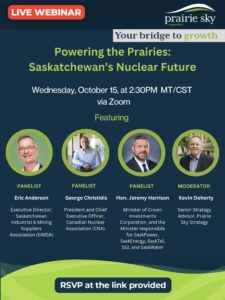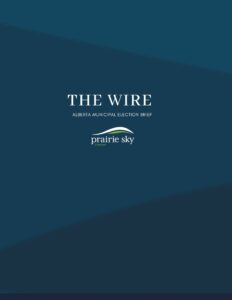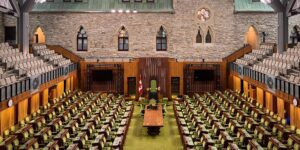Today, Alberta Finance Minister Travis Toews tabled his 3rd provincial budget in less than 2 years following his first budget in the fall of 2019 and the second in February of 2020. The Budget – entitled “Protecting Lives and Livelihood’s” – fulfills the requirement from last year’s Bill 4 – The Fiscal Planning and Transparency (Fixed Budget Period) Amendment Act – that mandated the introduction of the annual budget no later than the end of February each year.
Economic Assumptions
Accurately forecasting a budget in excess of $50 Billion is a challenging task at the best of times but doing so in the middle of a pandemic makes it next to impossible. A key assumption in every budget is the rate of economic growth projected in the upcoming and future fiscal years and in 2020 Minister Toews forecast a growth rate of 2.8%/year for 2020, 2021 and 2022.
However, no sooner had he tabled the budget when two weeks later Alberta was hit with the double-whammy of collapsing oil prices and significant personal and business restrictions related to COVID19 that combined to push Alberta’s economy into a recession in 2020 (like every other province and almost every country) resulting in a contraction of our provincial economy of approximately 7.3% (in real terms). This contraction combined with an unemployment rate substantially higher than forecast last year (11.4% vs. 5.1%), oil prices substantially below last year’s forecast, other commodity price impacts and retail sales falling off a cliff will result in a 2020-2021 budget deficit of $20.2 Billion at the end of Q4 on March 31st, 2021 when factoring in COVID19 contingency spending. While this deficit is lower than the $21.3 Billion forecast by Minister Toews in his fall Economic Statement, it will still be a record deficit for the province of Alberta.
Similarly, for 2021 and beyond, Minister Toews has had to make assumptions about how fast COVID cases will be under control by making further assumptions about how fast the province’s population will be vaccinated in order to arrive at another assumption of how fast the province’s economy will bounce back. The Budget assumes a growth rate of 4.8% in 2021, and beyond that to average 3.4%/year in the medium-term. These assumptions are obviously optimistic compared to “normal” years but can be justified if we have a successful vaccination plan and if the overall economy elsewhere in Canada and around the world bounces back resulting in a substantial increase in demand for oil & gas. Other assumptions include a forecast of $46 for West Texas Intermediate oil and our unemployment rate dropping to 9.9% by the end of the 2021-2022 fiscal year. However, as the Minister stated, “The outlook remains uncertain and is contingent on a timely roll-out of vaccines.”
No Changes to Tax or Royalty Rates
Aside from the economic assumptions that feed into the actual revenue projected to be received from the existing rates of Personal Income Tax (PIT), Corporate Income Tax (CIT), Resource Royalties and Excise Taxes, Minister Toews did not announce any changes to tax or royalty rates that would be applied to a recovering economy going forward.
Projected Spending
On the other side of the ledger, Minister Toews announced spending changes in the following Ministries and programs that will both add to and reduce the costs of government. The most significant changes are the following:
-
Supporting economic recovery and sector strategies – $3.1 B in spending toward strategies in technology and innovation, a Tourism recovery plan, Aviation, Aerospace and Logistics, Pharmaceuticals and Life Sciences, Energy, Agriculture, Labour and Talent and other sectors;
-
Healthcare – $21.4 B (up almost $900 M over last year);
-
COVID19 – $1.25 B COVID-19 Contingency Fund
-
Education – $8.25 B (up $57 M);
-
Social Services – $6.3 B – (up almost $350 M); and,
-
Other Ministries – $7.3 B (down almost $200 M).
Combined, these economic assumptions and budgeted spending targets result in a projected deficit in 2021-2022 of $18.2 Billion, in 2022-2023 of $11 Billion and in 2023-2024 of $8 Billion.
Conclusion
Minister Toews identified three fiscal anchors that will “guide fiscal decision-making during these uncertain times”:
-
Keeping net-debt-to-GDP under 30 percent;
-
Getting per capita spending in-line with comparator provinces (British Columbia, Ontario and Quebec); and,
-
After the pandemic, re-establishing a commitment to balance the budget.
The key factor in all three of these is how quickly we are able to reduce the number of COVID cases and the number of Albertans in hospital and in intensive care, which in turn is a function of how quickly we are able to get Albertan’s vaccinated. However, once COVID is under control and both business and personal restrictions are eased, Alberta’s economy will bounce back and it is quite reasonable to assume that with the combination of the lowest corporate tax in Canada (8%), a significant reduction in regulatory burden over the past 2 years, higher oil prices, strategic investments as part of Alberta’s Economic Recovery plan and a young and entrepreneurial population, Alberta will likely see a faster bounce back than other provinces that will allow it to recover more quickly, creating more jobs and beating the deficit targets included in this year’s budget.
Let’s hope that’s the case
Related Links
-
News Release: Budget 2021 Protecting Lives and Livelihoods
-
Budget 2021 Webpage





